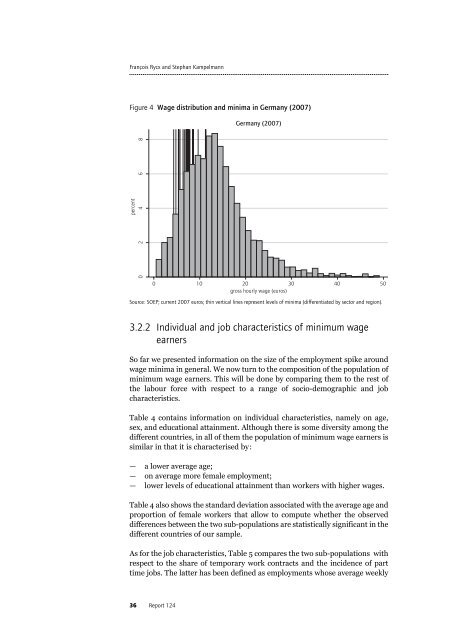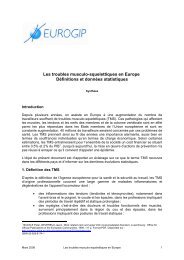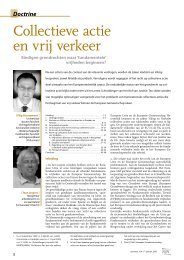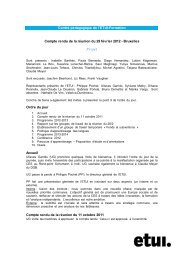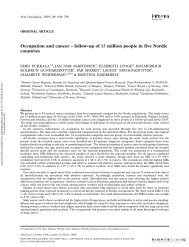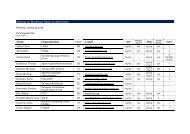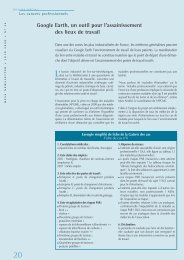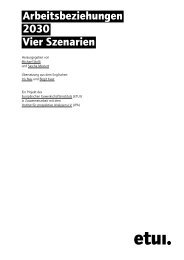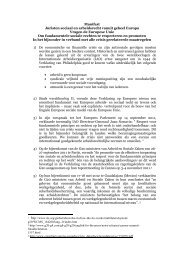Who earns minimum wages in Europe - European Trade Union ...
Who earns minimum wages in Europe - European Trade Union ...
Who earns minimum wages in Europe - European Trade Union ...
Create successful ePaper yourself
Turn your PDF publications into a flip-book with our unique Google optimized e-Paper software.
François Rycx and Stephan Kampelmann<br />
Figure 4 Wage distribution and m<strong>in</strong>ima <strong>in</strong> Germany (2007)<br />
0 2 4 6 8<br />
percent<br />
0 10 20 30 40 50<br />
gross hourly wage (euros)<br />
Source: SOEP; current 2007 euros; th<strong>in</strong> vertical l<strong>in</strong>es represent levels of m<strong>in</strong>ima (differentiated by sector and region).<br />
3.2.2 Individual and job characteristics of <strong>m<strong>in</strong>imum</strong> wage<br />
earners<br />
So far we presented <strong>in</strong>formation on the size of the employment spike around<br />
wage m<strong>in</strong>ima <strong>in</strong> general. We now turn to the composition of the population of<br />
<strong>m<strong>in</strong>imum</strong> wage earners. This will be done by compar<strong>in</strong>g them to the rest of<br />
the labour force with respect to a range of socio-demographic and job<br />
characteristics.<br />
Table 4 conta<strong>in</strong>s <strong>in</strong>formation on <strong>in</strong>dividual characteristics, namely on age,<br />
sex, and educational atta<strong>in</strong>ment. Although there is some diversity among the<br />
different countries, <strong>in</strong> all of them the population of <strong>m<strong>in</strong>imum</strong> wage earners is<br />
similar <strong>in</strong> that it is characterised by:<br />
— a lower average age;<br />
— on average more female employment;<br />
— lower levels of educational atta<strong>in</strong>ment than workers with higher <strong>wages</strong>.<br />
Table 4 also shows the standard deviation associated with the average age and<br />
proportion of female workers that allow to compute whether the observed<br />
differences between the two sub-populations are statistically significant <strong>in</strong> the<br />
different countries of our sample.<br />
As for the job characteristics, Table 5 compares the two sub-populations with<br />
respect to the share of temporary work contracts and the <strong>in</strong>cidence of part<br />
time jobs. The latter has been def<strong>in</strong>ed as employments whose average weekly<br />
36 Report 124<br />
Germany (2007)


